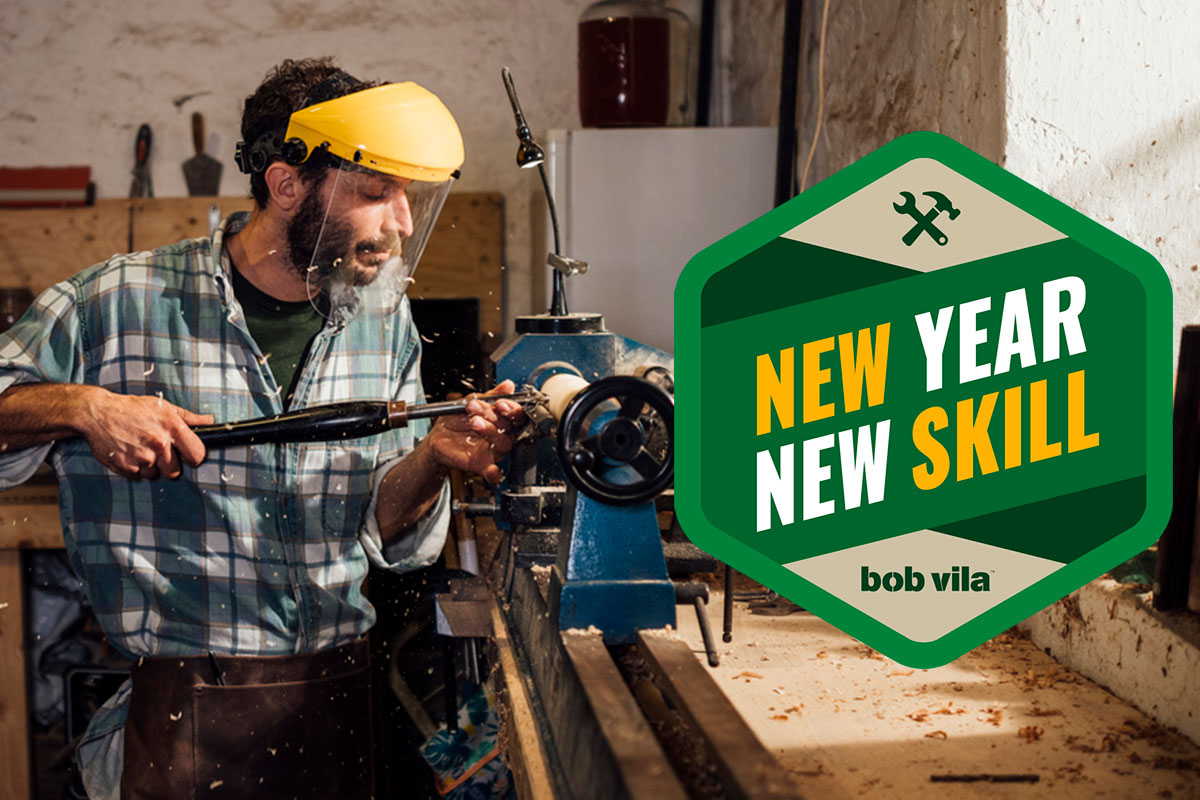

We may earn revenue from the products available on this page and participate in affiliate programs. Learn More ›
Woodturning is a fascinating hobby and not quite like any other kind of woodworking. Even though it involves a machine and tools, it is a very hands-on process. The wood responds to how you control the tools, and watching the wood shavings fly off a lathe can be tremendously satisfying and relaxing. However, this practice involves the use of a power tool that can be dangerous without proper safety procedures, so beginners should brush up on woodturning basics and find a safe place to start.
Woodturning allows woodworkers to create practical items, and also to explore their creativity. You can make useful items for the home and create fine gifts for friends. In this guide to woodturning for beginners, we introduce you to the techniques and tools you need to get started.
What Is Woodturning?
Technically speaking, woodturning uses a rotating lathe and sharp chisels to produce curved or cylindrical items. These can be anything from large-diameter platters to long columns.
Woodturning can trace its origins back at least 1,000 years. The first lathes were operated by a rope wound around a shaft, pulled by hand. Much later in early 20th century England, artisans called bodgers cut their own trees and used springy saplings to power their lathes.
Today, bodging has been replaced by mechanization, and woodturning jobs are rare. However, woodturning can certainly be a profitable side hustle, and it might even become a full-time source of income for a few.
What can you make on a woodturning lathe? The following practical woodturning projects are great for beginners.
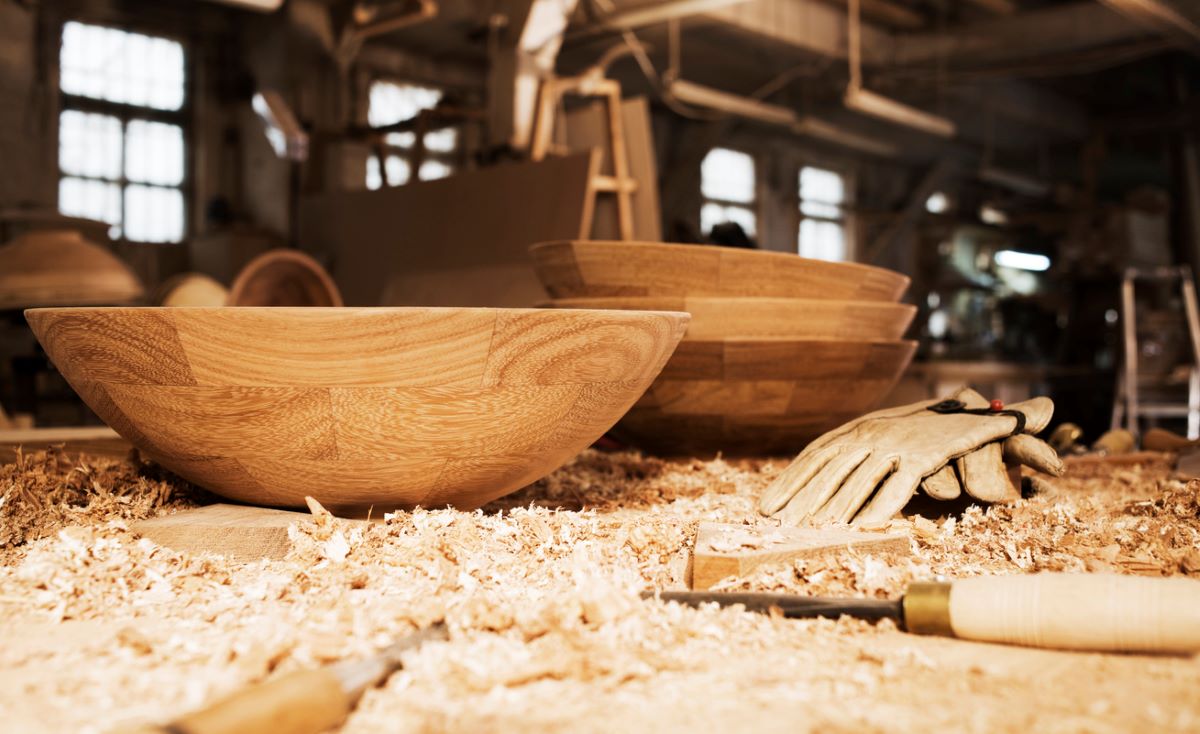
- Bowls are always a favorite, and they’re a great way to get started with faceplate turning. Shallow designs are easiest to begin with, and provide good practice in developing simple curves.
- Rolling pins are also an interesting challenge for the beginner. Turning a parallel cylinder is not as easy as many people think.
- Pen turning is very popular. It can be done on a very small lathe so it doesn’t need much space, and even novice woodturners can produce beautiful, highly desirable finished items.
- A mortar and pestle can involve both spindle and faceplate turning. Shapes are uncomplicated, so it offers good practice and it is easy for beginners to produce high-quality results.
- Candlesticks can be entirely spindle turned, or they can involve faceplate turning for the base. The same approach could be used for table lamps.
FOR MORE CREATIVE IDEAS:
➤ 20 Woodturning Projects for Beginners
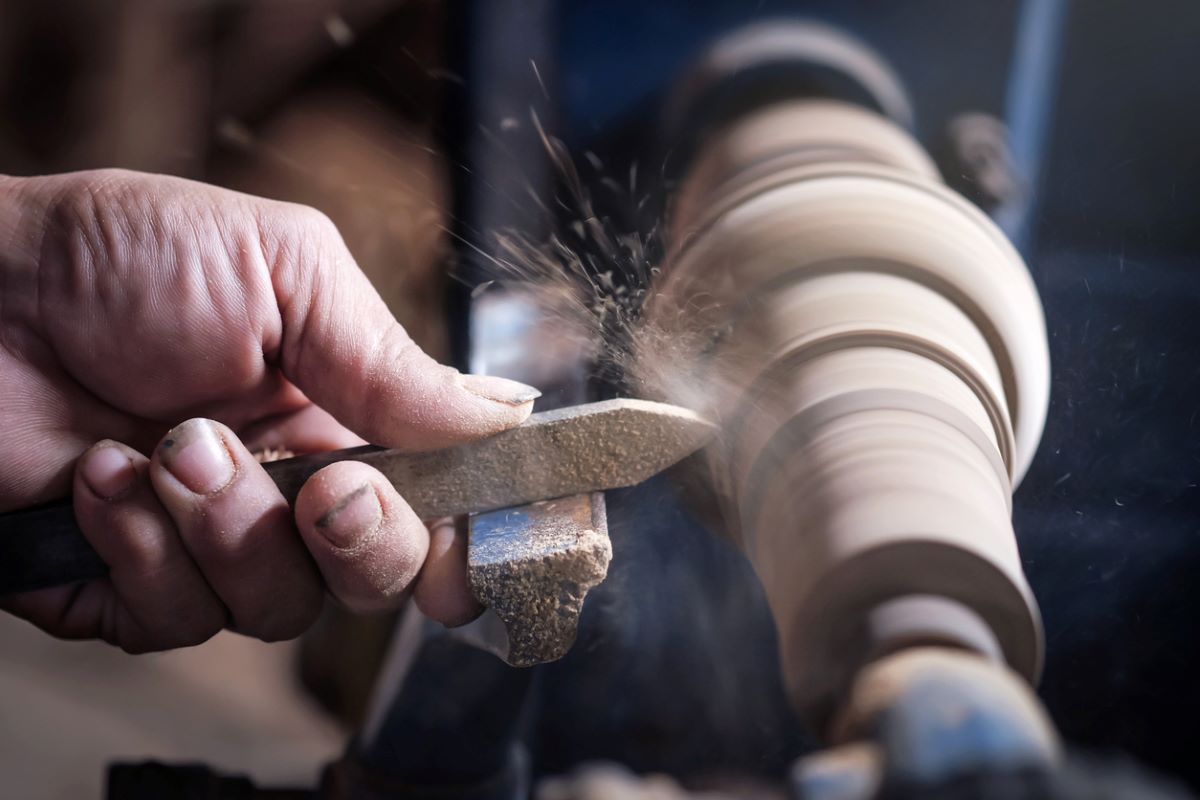
Woodturning Techniques
While a huge variety of items can be made on a wood lathe, they all use one of two techniques: spindle turning or faceplate turning.
Spindle turning is used to make anything from rolling pins and candlesticks to corner pillars for four-poster beds. It is also called turning between centers. The piece of wood to be turned is supported by steel points (called centers) at either end of the machine. A chuck is sometimes used at the headstock end (the part that houses the motor and gears). Because chucks cost extra, beginners usually manage without one.
Faceplate turning is most often used to make items like bowls and platters. Woodturning lathes are almost always supplied with a faceplate, which is a slotted disc that fits into the headstock. The woodturning blank is fixed to the faceplate using screws that pass through the back. The chisel moves along the side of the blank, and across the face. The part of the base where the screws hold the workpiece to the faceplate is inaccessible during turning. This can either be sanded smooth before mounting, or it can be cleaned up later.
A key decision when choosing a lathe is its size. Quality is always important, but unless you have a specific interest we recommend buying the largest model you can afford and have space to accommodate. You can always turn small items on a big lathe, but you can’t turn big items on a small lathe. Below, our guide to the best woodturning lathes has information on a variety of options, all of which are suitable for beginners.
FOR MORE ON BUYING AND USING A LATHE:
➤ The Best Wood Lathes
➤ How to Use a Lathe
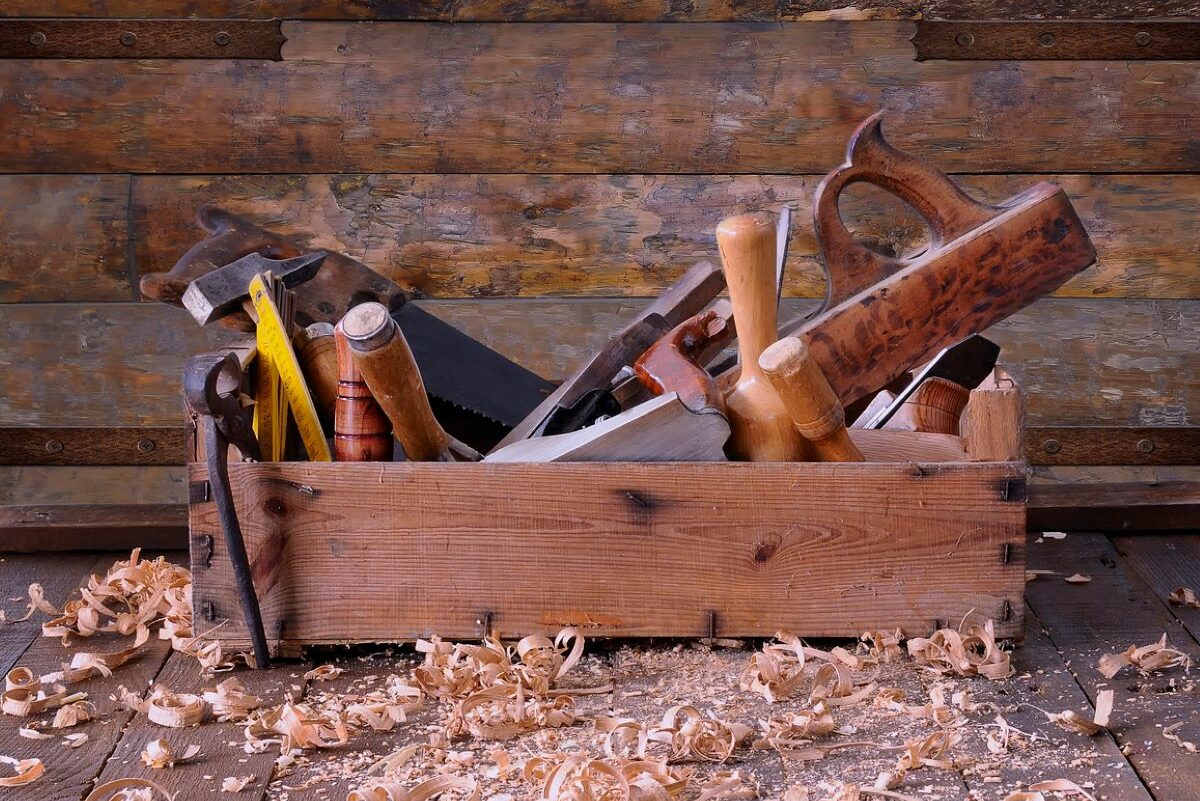
Essential Woodturning Supplies
In addition to a quality lathe, let’s focus on the basic tools most appropriate for beginning woodturners. It goes without saying (but we’ll say it anyway) that you should always wear appropriate personal protective equipment when working with tools. When turning wood, we especially recommend that you use a face shield and an N95 mask; a woodworking apron is also a good idea.
Woodturning chisel set: There are hundreds of woodturning chisels available, but the most economical way for beginners to get started is with a basic chisel set, like this option available at Amazon. Look for a set that includes, at minimum, the following pieces:
- A roughing gouge is a heavy-duty chisel used to quickly remove the edges from a woodturning blank to make the blank round.
- Spindle gouges are used for spindle turning, and they can create anything from small rounded areas to long flowing curves.
- Bowl gouges aren’t just for bowls, but they can be used for all kinds of faceplate turning.
- Skew chisels can cut fine detail lines, make indentations, sharp corners, and long, straight turnings like a rolling pin.
- A scraper is often useful for smoothing out small ridges, particularly inside bowls.
- A parting tool is mostly used to remove the waste at either end of spindle work, though it can also be used with the faceplate turning.
Abrasives: Cheap sandpaper sheets crack and tear when used with woodturning, and don’t allow a woodworker to follow the contours of the work. We recommend the more flexible silicon carbide sheet, such as this sample set from Atosun. There also are sanders available for bowl and vase work, but they don’t work well on spindles.
Grinder: Keeping chisels sharp is vital for good woodturning. The Bucktool dual-speed grinder has two wheels, so you can use one for turning tools and the other for ordinary grinding jobs.
Blanks: Your local hardware store may have lumber that isn’t specifically sold as blanks, but could do the job. However, most woodturners prefer to turn hardwoods because of the denser grain, and most stores deal in softwoods. Speciality suppliers aren’t hard to find, but it’s also worth checking out local lumber yards or sawmills. Additionally, spread the word about your new woodturning hobby, and people will often offer wood they would otherwise have thrown away. The best wood for turning is always the stuff you don’t have to buy.
FOR MORE ON WOODTURNING SUPPLIES:
➤ 10 Woodturning Tools Every Beginner Needs
➤ 17 Types of Wood All DIYers Should Know
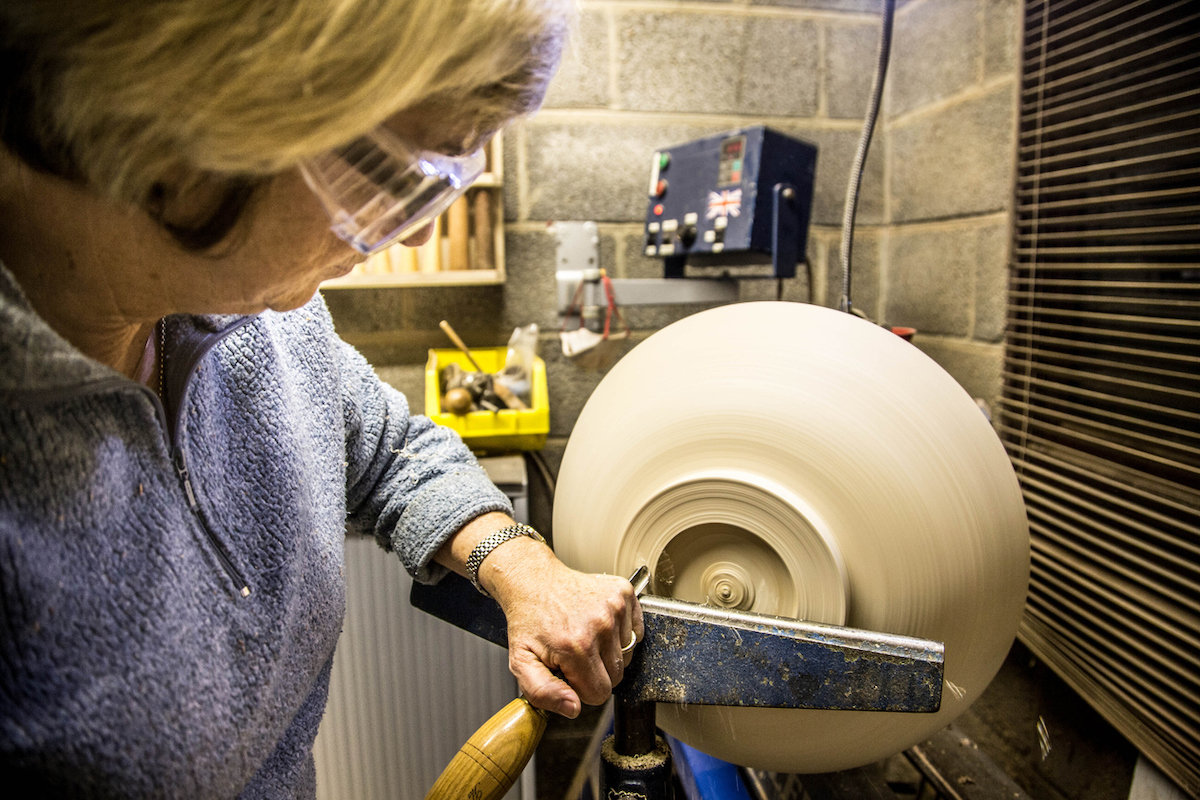
Next Steps
It’s easy for beginners to get started with woodturning, and the basic skills can be mastered in a matter of weeks. However, be warned that woodturning can be addictive. Part of the appeal of woodturning is that there’s always something new to learn or a new technique to try. Combining wood with epoxy resin, for example, can produce some stunning artistic results.
Before investing in the essentials above, it’s a good idea to see if there are any woodturning classes, clubs, or co-op workshop spaces in your area. These opportunities allow you to “try before you buy,” so to speak, and take expensive equipment for a spin before investing in it yourself. You will also meet like-minded individuals.
While it is possible to learn woodturning by yourself, experienced woodturners can often give you tips to improve your technique. They can also help source key supplies like woodturning blanks, abrasives, and finishes. It’s worth investigating whether the American Association of Woodturners has a chapter near you (or signing up for one of their virtual events).
FOR MORE LEARNING OPPORTUNITIES:
➤ The Best Online Woodworking Classes
➤ The Best Woodworking Books for Honing Your Craft
